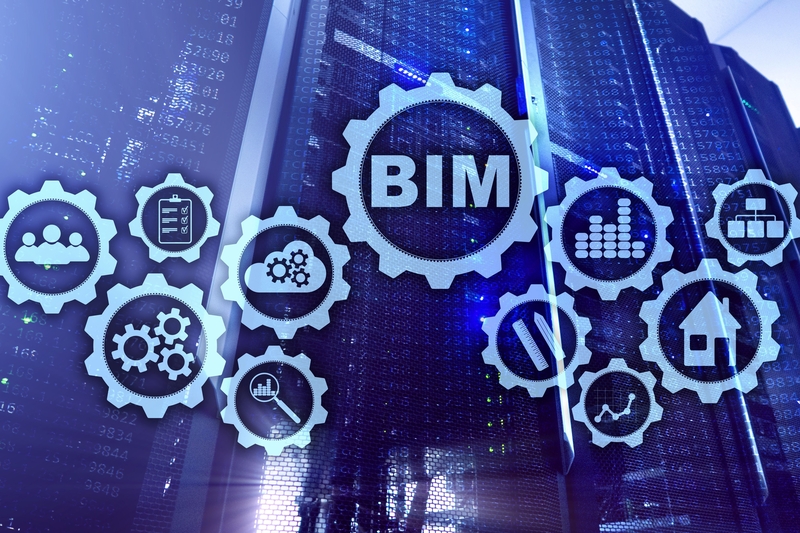In the world of digital construction, it’s not just about the files, but the ability to collaborate on them
Everyone is “going digital.”
In industries like construction, which have been slower adopters of technology, the phrase “going digital” has become quite a buzzword. However, with it being such a vague term and becoming so widely used, there are so many possible implied meanings. So what does it mean with regards to construction?
Throughout the past 10 years, the entire AEC industry has been going through a quick digital revolution. On job sites alone, you have industry vets that were raised on paper documents having to work alongside the newest generation that, in most cases, were not taught how to write cursive. Instead, they were raised with tablets and phones in their hands.
So when it comes to “going digital” and the digital transformation within the industry, we have to ask not just what does it mean but what are the benefits and how do we maximise them? Because one thing is for certain, we will never go back to a pen and paper time period.
We all needed (digital) revolution
Though the broader construction industry has been a bit slower to catch on to the digital revolution, many top firms worldwide have seen some significant returns on their investments in BIM software. Some of the more noticeable returns include improved workflows, time savings, eliminating reworks that cut costs and raise revenue and delivering a better end product.
When the term “going digital” first came to light, it generally referenced files and models. 2D models were previously stored as stacks of paper. Teams had to coordinate back and forth over the phone, email and by foot to relay every little change. Architects created miniature models of the projects for 3D representations. With these manual processes came a lack of historical documentation, room for human error and a lack of transparency. Not to mention having no ability to look back and understand why someone made a change.
All of that changed when models and project data moved digital. Versioning became much simpler, backing up files became a normal process and owners gained better insight into their buildings by having some historical documentation. But the truth is, digital files just skimmed the surface with regards to solving some of the construction industries biggest challenges.
Along came BIM
As the adoption and mainstreaming of digital files continued to pick up, new ideas came into play. Teams saw more advanced uses of technology and saw the power it possessed to deliver even bigger cost savings and better efficiencies. Projects were still dealing with delays, unexpected costs generally due to inaccurate information being used throughout the building lifecycle. This was not generally from someone making a mistake but, more often than not, from information time-gaps and the delays that it took to get information into the right person’s hands before the point is constructed on the physical project. Then came BIM and it was here to help.
BIM is the process of creating and managing digital information of a construction project throughout all stages of its lifecycle. BIM is not a particularly new concept. However, in the past few years, adoption around the globe has skyrocketed and practices have improved collectively.
Recently, it has gone a step further and not just focused on giving everyone access and visibility to the digital information but more so, enabling everyone to share information and collaborate in near real-time. Instead of someone making a change on a piece of paper and having to relay it to all necessary stakeholders manually, a change can be made directly within a BIM platform like Revizto. All impacted stakeholders can be notified instantly and the team can find solutions faster.
While the adoption of BIM is increasing, in many cases, it is only being used at the earlier stages of construction. BIM is most effective when everyone on the project team, from the trades to the architects, uses BIM collaboratively – and from day one. By getting all parties collaborating in real-time and working from a single source, project teams can see more accurate planning and forecasting while reducing errors and risks.
Digital construction is about collaboration, not just the files
Many countries have started to follow the UK government’s BIM mandate, including France, Germany and Spain. These, among many more in the future, are set to make BIM a mandatory requirement in the coming years.
Regardless, contractors, architects, engineers and owners are adopting it and encouraging their extended project teams to join. Using digital construction workflows and tools like an Integrated Collaboration Platform (ICP) increases everyone’s chances of being able to deliver a project on time and within budget.
While many companies feel they have adequately adopted BIM into their workflows because they simply use a digital model of the project, the most critical principle of BIM is collaboration. And with collaboration, it needs to be integrated across teams and be in near real-time.
In order to maximise the benefits of digital construction, models and data must be leveraged as a shared resource between clients, design teams, contractors and subcontractors and act as the single source of truth. Historically, teams have one or two technical people on-site that manage the models. However, user-friendly tools like Revizto take away access barriers and enable all stakeholders and technical skill levels the ability to view and communicate directly on the models, regardless of their physical location. Users can easily find the information they need to do their job and have confidence that the information they are looking at is up-to-date and accurate.
Simply put, it’s not one size fits all – but one model fits all.
Rhys Lewis
Director | EMEA
Vizerra SA (product name Revizto)
Tel: +44 203 808 9239
Twitter: @revizto
Please note: this is a commercial profile.

















